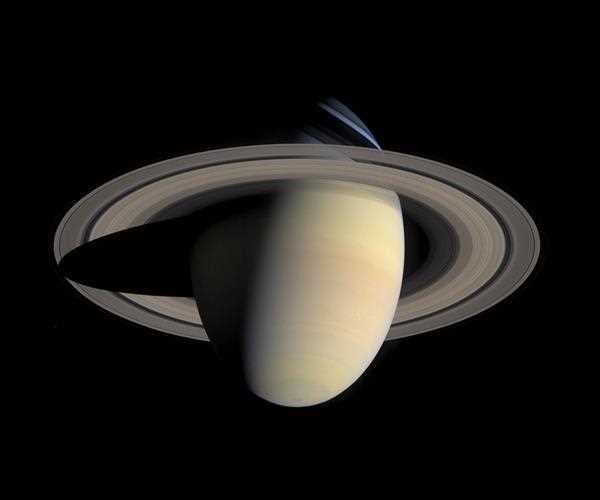
Mimas, Saturn's smallest moon, may have an ocean under its frozen surface.
HIGHLIGHTS
Mimas' rotation is shaky.
It might be owing to the fact that it has an underwater ocean.
The snowy surface of Mimas distinguishes it.
WHY IN NEWS
Saturn, the Solar System's second-largest planet after Jupiter, has long piqued the interest of amateur astronomers as well as experts. It is immediately identifiable due to the large rings that surround it. It does, however, have another notable feature: more than 60 moons. One of these moons has lately piqued the curiosity of scientists. Mimas, a small moon circling the planet, may be hiding an ocean beneath its icy surface, according to new study. Saturn is the only planet with a density lower than that of water, which means the Ringed Planet would float in a bathtub large enough to accommodate it. Mimas rotates in a wobbling manner, which experts say indicates an extended core or an interior ocean.
also read : https://tinyurl.com/paryvsp2
Mimas, on the other hand, displays no signs of an ocean under its surface, unlike other moons with seas. It might be, according to research published in the Icarus magazine. Alyssa Rhoden and her colleague Matthew Walker, like many other scientists, had set out to refute the ocean idea until they realized it may really retain water beneath 14–20 miles of ice . Because Mimas' surface is extensively cratered, Rhoden and her colleague assumed it was merely a frozen block of ice, according to Rhoden, an expert in the geophysics of icy satellites and co-leader of NASA's Network for Ocean Worlds Research Coordination Network.
also read : https://tinyurl.com/5n7572jd
Mimas' surface has been misleading researchers all along, according to Rhoden, and their new understanding has greatly enlarged the concept of a possibly livable world in the solar system and beyond. While their findings suggest the presence of a modern-day ocean within Mimas, Rhoden cautioned that reconciling the 'moon's orbital and geologic properties with our existing knowledge of its thermal-orbital development' was problematic.


